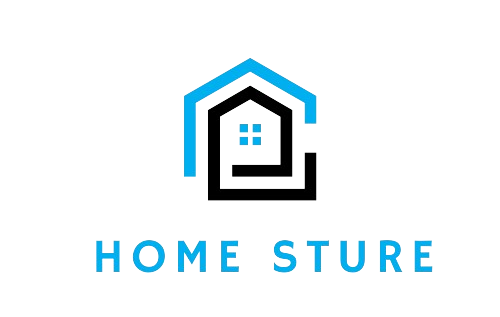Water damage is a pervasive issue that can wreak havoc on homes and businesses alike. When water gets in through a broken pipe, flooding, or a roof that leaks, the damage can be terrible. However, the key to mitigating the damage lies in the swift and effective implementation of water damage restoration techniques. Among these techniques, proper drying methods stand out as one of the most essential steps in the restoration process. In this comprehensive guide, we delve into the importance of proper drying techniques in water restoration, exploring their significance in salvaging property and preventing long-term damage.
The Importance Of Drying Techniques:
When water infiltrates a structure, it tends to seep into porous materials such as wood, drywall, and upholstery. Left unchecked, this moisture can lead to a host of problems, including mold growth, structural weakening, and deterioration of building materials. Proper drying techniques are critical in removing excess moisture from these materials and restoring the affected environment to its pre-damage condition.
Effective Moisture Removal Is Paramount For Several Reasons:
Preventing Mold Growth: One of the biggest worries after water damage is the chance that mold will grow. Mold spores grow best in damp places and can start to take over within 24 to 48 hours of being exposed to water. By using thorough cleaning methods, moisture levels are lowered, which stops mold from growing and protects the quality of the air inside.
Preserving Structural Integrity: When a building is exposed to water for a long time, it can weaken its structure. Wood beams, drywall, and insulation are especially likely to grow, warp, and weaken over time when they come into contact with water. Using the right cleaning methods can help keep the structure from breaking down, which keeps the property safe and stable.
Mitigating Health Risks: Excessive moisture can create an ideal breeding ground for bacteria and pathogens, posing significant health risks to occupants. Damp environments foster the proliferation of harmful microorganisms, increasing the likelihood of respiratory issues, allergic reactions, and other health complications. By thoroughly drying affected areas, water damage restoration professionals mitigate these health hazards, ensuring a safe and hygienic living or working environment.
The Role Of Drying Equipment And Technology:
Achieving optimal drying requires the utilization of specialized equipment and technology designed to expedite the process and ensure thorough moisture removal. Key components of effective drying include:
Air Movers: Air movers, also known as blowers or fans, play a crucial role in promoting air circulation and accelerating evaporation. These high-powered devices circulate dry air across wet surfaces, enhancing moisture evaporation rates and facilitating the drying process.
Dehumidifiers: Dehumidifiers are indispensable tools in water damage restoration, extracting excess moisture from the air and surrounding materials. By reducing humidity levels, dehumidification devices expedite drying times and prevent secondary damage such as mold growth and corrosion.
Moisture Meters: Moisture meters are accurate tools used to find out how much water is in different materials. Restoration professionals can figure out how bad the water damage is and see how well drying efforts are working by correctly measuring the amount of moisture present. This method is based on data, so it makes sure that all the moisture is gone and stops other problems from happening.
Thermal Imaging Cameras: Thermal imaging cameras enable restoration experts to identify hidden pockets of moisture that may not be visible to the naked eye. By detecting temperature variations indicative of moisture presence, thermal imaging technology allows for targeted drying efforts, ensuring comprehensive moisture removal and minimizing the risk of hidden water damage.
Best Practices For Effective Drying:
To maximize the effectiveness of drying techniques and expedite the restoration process, adherence to best practices is essential:
Prompt Response: When fixing water damage, time is the key. Quick action is essential to stop more damage and limit the amount of water that gets in. Professional restoration services have quick-reaction teams that can quickly assess the situation, start drying out the area, and lessen the damage.
Thorough Assessment: To find out how bad the water damage is and what the best next step is, the affected area is thoroughly inspected before any drying processes are started. This initial evaluation informs the selection of drying equipment and techniques tailored to the specific needs of the situation.
Proper Ventilation: Adequate ventilation is critical during the drying process to promote airflow and facilitate moisture evaporation. Restoration professionals strategically position air movers and open windows to optimize air circulation and expedite drying times. For added benefit, good airflow keeps old air from building up and reduces the smell of water damage.
Monitoring And Adjustment: Throughout the drying process, continuous monitoring of moisture levels is essential to assess progress and make necessary adjustments. Restoration technicians utilize moisture meters and hygrometers to track moisture content and humidity levels, adjusting drying equipment placement and settings as needed to optimize results.
Conclusion:
In the realm of water damage restoration, proper drying techniques emerge as a cornerstone of effective mitigation and restoration efforts. By expeditiously removing excess moisture from affected structures and materials, restoration professionals mitigate the risk of mold growth, preserve structural integrity, and safeguard occupant health. Through the strategic deployment of advanced drying equipment and adherence to best practices, water damage restoration specialists uphold their commitment to restoring properties to pre-damage conditions swiftly and efficiently.

